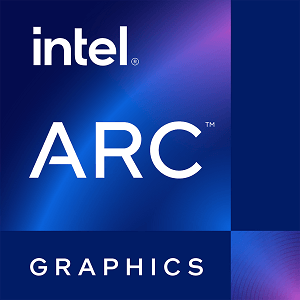NVIDIA RTX 5000 Max-Q Ada Generation vs Intel Arc A770M
We compared two Mobile platform GPUs: 16GB VRAM RTX 5000 Max Q Ada Generation and 16GB VRAM Arc A770M to see which GPU has better performance in key specifications, benchmark tests, power consumption, etc.
Main Differences
NVIDIA RTX 5000 Max-Q Ada Generation 's Advantages
Released 1 years and 2 months late
Boost Clock has increased by 2% (1680MHz vs 1650MHz)
Larger VRAM bandwidth (576.0GB/s vs 512.0GB/s)
5632 additional rendering cores
Score
Benchmark
FP32 (float)
RTX 5000 Max Q Ada Generation
+141%
32.69 TFLOPS
Arc A770M
13.52 TFLOPS
Graphics Card
Mar 2023
Release Date
Jan 2022
Quadro Ada-M
Generation
Alchemist
Mobile
Type
Mobile
PCIe 4.0 x16
Bus Interface
PCIe 4.0 x16
Clock Speeds
930 MHz
Base Clock
300 MHz
1680 MHz
Boost Clock
1650 MHz
2250 MHz
Memory Clock
2000 MHz
Memory
16GB
Memory Size
16GB
GDDR6
Memory Type
GDDR6
256bit
Memory Bus
256bit
576.0GB/s
Bandwidth
512.0GB/s
Render Config
-
-
-
76
SM Count
-
9728
Shading Units
4096
304
TMUs
256
112
ROPs
128
304
Tensor Cores
-
76
RT Cores
32
128 KB (per SM)
L1 Cache
-
64 MB
L2 Cache
16 MB
-
-
-
Theoretical Performance
188.2 GPixel/s
Pixel Rate
211.2 GPixel/s
510.7 GTexel/s
Texture Rate
422.4 GTexel/s
32.69 TFLOPS
FP16 (half)
27.03 TFLOPS
32.69 TFLOPS
FP32 (float)
13.52 TFLOPS
510.7 GFLOPS
FP64 (double)
-
Board Design
120W
TDP
120W
-
-
-
Portable Device Dependent
Outputs
No outputs
None
Power Connectors
-
Graphics Processor
AD103
GPU Name
DG2-512
-
GPU Variant
ACM-G10
Ada Lovelace
Architecture
Generation 12.7
TSMC
Foundry
TSMC
5 nm
Process Size
6 nm
45.9 billion
Transistors
21.7 billion
379 mm²
Die Size
406 mm²
Graphics Features
12 Ultimate (12_2)
DirectX
12 Ultimate (12_2)
4.6
OpenGL
4.6
3.0
OpenCL
3.0
1.3
Vulkan
1.3
8.9
CUDA
-
6.7
Shader Model
6.6



